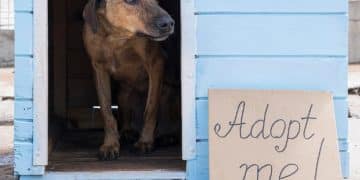Protecting Your Animal Shelter: Navigating Legal Issues in the US

Navigating Legal Issues: Protecting Your Animal Shelter from Liability in the US requires understanding various state and federal laws, implementing robust safety protocols, maintaining adequate insurance coverage, and ensuring proper documentation to mitigate potential risks and liabilities.
Running an animal shelter is a labor of love, dedicated to the well-being of animals in need. However, it also comes with its own set of challenges, particularly when it comes to navigating legal issues: protecting your animal shelter from liability in the US. Understanding the legal landscape and implementing proactive measures is crucial for ensuring the safety of the animals, staff, volunteers, and visitors, and for safeguarding the shelter’s future.
Understanding the Legal Framework for Animal Shelters
Animal shelters operate within a complex legal framework that includes federal, state, and local laws. Understanding this framework is the first step in protecting your shelter from liability. These laws govern various aspects of shelter operations, from animal care standards to adoption procedures.
Federal Regulations Affecting Animal Shelters
While most direct regulation of animal shelters occurs at the state and local level, some federal laws have implications for shelters. These include laws related to animal welfare and workplace safety.
- The Animal Welfare Act (AWA): Although primarily focused on research facilities, zoos, and animal dealers, the AWA sets standards for animal care and handling that can inform best practices for shelters.
- The Occupational Safety and Health Act (OSHA): Shelters must comply with OSHA regulations to ensure a safe working environment for staff and volunteers. This includes providing training on handling animals and preventing workplace injuries.
Complying with these federal regulations, even indirectly, demonstrates a commitment to high standards of care and safety.
State and Local Laws Governing Animal Shelters
State and local laws are the primary source of regulation for animal shelters. These laws vary widely, so it’s crucial to understand the specific requirements in your jurisdiction.
- Animal Cruelty Laws: Shelters must adhere to state animal cruelty laws, which define what constitutes animal abuse and neglect. Reporting suspected cases of animal cruelty is often a legal obligation.
- Vaccination and Licensing Requirements: Many states and localities require shelters to vaccinate animals against common diseases and obtain licenses to operate.
- Adoption Laws: These laws govern the adoption process, including disclosure requirements, adoption contracts, and post-adoption care.
Staying informed about changes in state and local laws is essential for maintaining compliance and minimizing legal risks.
Understanding the legal framework allows shelters to proactively address potential liabilities and create a safe environment for everyone involved.
Mitigating Risks: Implementing Safety Protocols
One of the most effective ways to protect your animal shelter from liability is to implement comprehensive safety protocols. These protocols should address the safety of animals, staff, volunteers, and visitors.
Animal Handling Procedures
Proper animal handling procedures are crucial for preventing injuries to both humans and animals. Training staff and volunteers in safe handling techniques can significantly reduce the risk of accidents.
- Training Programs: Provide regular training sessions on how to safely handle different types of animals, including those with behavioral issues.
- Personal Protective Equipment (PPE): Ensure that staff and volunteers have access to appropriate PPE, such as gloves, masks, and eye protection.
- Safe Lifting Techniques: Train staff on proper lifting techniques to prevent back injuries when handling heavy animals or equipment.
Regularly reviewing and updating animal handling procedures ensures they remain effective and relevant.

Visitor Safety Measures
Visitors to the shelter should be provided with clear guidelines to ensure their safety. This includes rules for interacting with animals and designated areas for public access.
- Signage: Post clear signage indicating rules for interacting with animals, such as “Do not enter without permission” and “Supervise children at all times.”
- Designated Areas: Create designated areas for visitors to interact with animals, away from potentially hazardous areas like kennels and food storage.
- Supervision: Ensure that staff or volunteers are always available to supervise visitor interactions with animals and address any safety concerns.
By prioritizing visitor safety, shelters can reduce the risk of accidents and injuries on their property.
Implementing comprehensive safety protocols demonstrates a commitment to the well-being of everyone who interacts with the shelter, reducing potential liabilities.
The Role of Insurance in Protecting Your Animal Shelter
Insurance coverage is a critical component of protecting your animal shelter from financial losses due to liability claims. Different types of insurance policies can provide coverage for various types of risks.
Types of Insurance Coverage
Understanding the different types of insurance coverage available is essential for choosing the right policies for your shelter.
- General Liability Insurance: This type of insurance covers bodily injury and property damage caused by the shelter’s operations. It can protect against claims from visitors, volunteers, and others who are injured on the property.
- Professional Liability Insurance: Also known as errors and omissions insurance, this covers claims arising from professional advice or services provided by the shelter, such as veterinary care or behavioral consultations.
- Workers’ Compensation Insurance: This is required in most states and covers medical expenses and lost wages for employees who are injured on the job.
Each type of insurance provides a specific layer of protection, ensuring that the shelter is financially protected in the event of a claim.
Assessing Your Insurance Needs
Determining the right amount and type of insurance coverage requires a thorough assessment of your shelter’s specific risks and liabilities.
- Risk Assessment: Conduct a comprehensive risk assessment to identify potential hazards and liabilities. This should include an evaluation of animal handling procedures, visitor safety measures, and employee training programs.
- Policy Limits: Choose policy limits that are sufficient to cover potential claims. Consider factors such as the size of your shelter, the number of animals you care for, and the number of visitors and volunteers you have.
Regularly review your insurance coverage to ensure it remains adequate and up-to-date.

Adequate insurance coverage provides financial security and peace of mind, allowing the shelter to focus on its mission of caring for animals without the worry of crippling liability claims.
Adoption Contracts and Liability Waivers
Adoption contracts and liability waivers are important tools for protecting your animal shelter from post-adoption claims. These documents outline the responsibilities of the adopter and the shelter, and can limit the shelter’s liability for certain types of damages.
Essential Elements of Adoption Contracts
A well-drafted adoption contract should clearly outline the expectations and responsibilities of both the adopter and the shelter.
- Ownership Transfer: Clearly state that ownership of the animal is transferred to the adopter upon signing the contract.
- Care Requirements: Specify the adopter’s responsibilities for providing proper care for the animal, including food, water, shelter, veterinary care, and exercise.
- Return Policy: Outline the shelter’s policy for returning the animal, including any time limits or conditions.
Enforceable adoption contracts can help prevent disputes and protect the shelter from liability.
Using Liability Waivers Effectively
Liability waivers can be used to limit the shelter’s liability for certain types of damages, such as injuries caused by the adopted animal after it leaves the shelter.
- Clear Language: Use clear and unambiguous language in the waiver to ensure that adopters understand the risks they are assuming.
- Scope of Waiver: Clearly define the scope of the waiver, including the types of claims that are being waived.
- Voluntary Agreement: Ensure that the waiver is signed voluntarily and that adopters are given the opportunity to ask questions before signing.
Properly drafted and executed liability waivers can provide an additional layer of protection for the shelter.
Adoption contracts and liability waivers are valuable tools for managing post-adoption risks and protecting the shelter from legal claims.
Maintaining Accurate Records and Documentation
Accurate record-keeping and documentation are essential for demonstrating compliance with laws and regulations and for defending against liability claims. Detailed records can provide evidence of the shelter’s policies, procedures, and actions.
Types of Records to Keep
Different types of records should be maintained to document various aspects of the shelter’s operations.
- Animal Records: Keep detailed records for each animal, including its history, medical treatment, vaccinations, and behavioral assessments.
- Incident Reports: Document any incidents involving animals, staff, volunteers, or visitors, including injuries, bites, and property damage.
- Training Records: Maintain records of all training provided to staff and volunteers, including the topics covered and the dates of the training sessions.
Comprehensive records provide a clear and accurate picture of the shelter’s operations and can be invaluable in defending against claims.
Best Practices for Record-Keeping
Implementing best practices for record-keeping can ensure that records are accurate, complete, and easily accessible.
- Digital Records: Use electronic record-keeping systems to store and manage records efficiently.
- Regular Updates: Update records regularly to ensure they are current and accurate.
- Secure Storage: Store records securely to protect them from loss, damage, or unauthorized access.
Adopting these best practices can streamline record-keeping and improve the shelter’s ability to respond to legal inquiries.
Maintaining accurate records and documentation demonstrates transparency and accountability, strengthening the shelter’s defense against potential liability claims.
Responding to Legal Claims and Investigations
Even with the best preventative measures in place, animal shelters may still face legal claims or investigations. Knowing how to respond effectively can minimize the impact of these situations.
Steps to Take When a Claim is Filed
Responding promptly and appropriately to a legal claim is crucial for protecting the shelter’s interests.
- Notify Your Insurance Company: Immediately notify your insurance company of any claim that is filed against the shelter.
- Gather Documentation: Collect all relevant documentation, including animal records, incident reports, and adoption contracts.
- Seek Legal Counsel: Consult with an attorney who specializes in animal law to obtain advice on how to proceed.
Taking these steps can help ensure that the shelter is well-represented and that its rights are protected.
Cooperating with Investigations
Cooperating with investigations by law enforcement or regulatory agencies is generally advisable, but it’s important to do so in a way that protects the shelter’s interests.
- Remain Calm: Stay calm and polite when interacting with investigators.
- Answer Questions Truthfully: Answer questions truthfully, but avoid speculating or providing information that you are not certain about.
- Consult with Legal Counsel: Consult with your attorney before providing any documents or making any statements to investigators.
Cooperation can help resolve investigations quickly and favorably, while protecting the shelter from further legal action.
Knowing how to respond to legal claims and investigations is an essential part of protecting your animal shelter from liability.
| Key Area | Brief Description |
|---|---|
| 🛡️ Legal Framework | Understanding federal, state, and local laws is crucial for compliance. |
| 🐾 Safety Protocols | Implementing safety measures protects animals, staff, volunteers, and visitors. |
| 💰 Insurance | Appropriate insurance coverage safeguards against financial losses from claims. |
| 📝 Documentation | Maintaining accurate records demonstrates compliance and aids in defense. |
Frequently Asked Questions
▼
The Animal Welfare Act sets standards for animal care, while OSHA regulations ensure a safe working environment for staff and volunteers.
▼
An adoption contract should include ownership transfer details, care requirements for the animal, and the shelter’s return policy.
▼
Insurance coverage protects against financial losses from liability claims, covering bodily injury, property damage, and professional errors.
▼
Shelters can ensure visitor safety by posting clear signage, designating safe interaction areas, and providing supervision during animal interactions.
▼
Shelters should maintain animal records, incident reports, and training records to ensure transparency and compliance with regulations.
Conclusion
Protecting your animal shelter from liability is an ongoing process that requires attention to detail, proactive measures, and a commitment to the well-being of animals and people. By understanding the legal framework, implementing robust safety protocols, maintaining adequate insurance coverage, and keeping accurate records, you can create a safe and secure environment for your shelter and its community.





